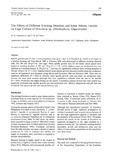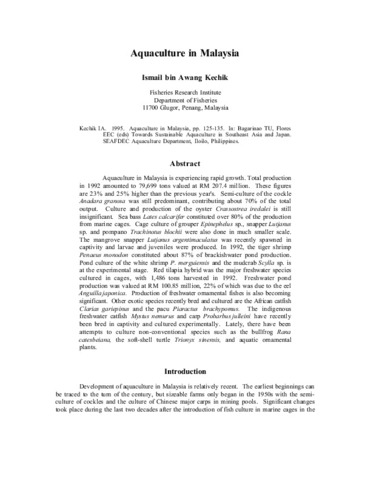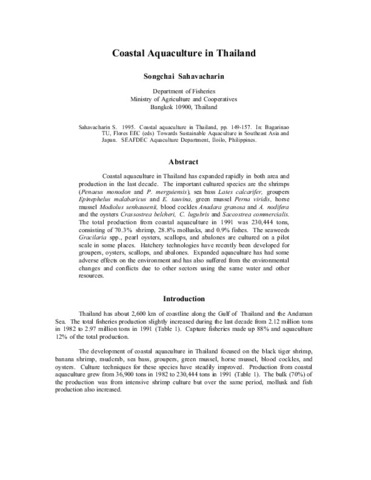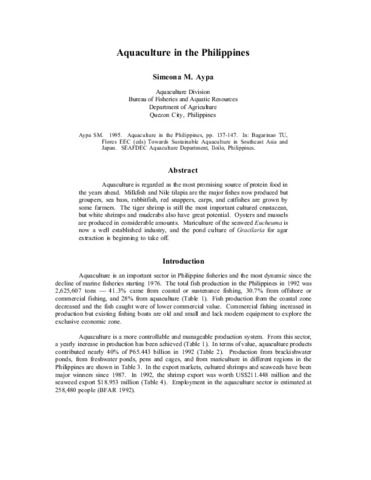The effects of different stocking densities and some abiotic factors on cage culture of Gracilaria sp. (Rhodophyta, Gigartinales)

View/
Request this document
Date
1992Page views
213Metadata
Show full item recordCited times in Scopus
Share
Abstract
Specific growth rates (% day-1) and production rates (g m-2 day-1) of Gracilaria sp. reared in net cages on a bamboo floating raft from March 1989 to February 1990 were determined at different stocking densities (200, 250, 300 and 350 g 0.5 m-2/net cage). Mean specific growth rates for the whole culture period were highest at stocking densities of 200 and 250 g 0.5 m-2 (P < 0.05). Highest mean net production rate was obtained at a stocking of 250 g 0.5 m-2, but was not significantly different from stocking densities of 300 and 350 g 0.5 m2 (P < 0.05). Highest monthly mean specific growth rates and monthly mean net production rates for all treatments were obtained during March and November 1989 and February 1990. There were no significant differences (P > 0.05) in monthly mean specific growth rates and mean net production rates between the three peak months, although they were significantly different from the rest of the months (P < 0.05). Production was higher during the dry season. Correlation analysis showed that total rainfall was negatively correlated with specific growth rate and production rate. Salinity, temperature and pH were not correlated with specific growth rate and production rate.
Suggested Citation
Guanzon, N. G., Jr., & de Castro, T. R. (1992). The effects of different stocking densities and some abiotic factors on cage culture of Gracilaria sp. (Rhodophyta, Gigartinales). Botanica Marina , 35(3), 239-243. https://doi.org/10.1515/botm.1992.35.3.239
Subject
Collections
- AQD Journal Articles [1222]
Related items
Showing items related by title, author, creator and subject.
-
Aquaculture in Malaysia
Kechik, Ismail bin Awang. (Aquaculture Department, Southeast Asian Fisheries Development Center, 1995)Aquaculture in Malaysia is experiencing rapid growth. Total production in 1992 amounted to 79,699 tons valued at RM 207.4 million. These figures are 23% and 25% higher than the previous year's. Semi-culture of the cockle ... -
Coastal aquaculture in Thailand
Sahavacharin, Songchai (Aquaculture Department, Southeast Asian Fisheries Development Center, 1995)Coastal aquaculture in Thailand has expanded rapidly in both area and production in the last decade. The important cultured species are the shrimps (Penaeus monodon and P. merguiensis), sea bass Lates calcarifer, groupers ... -
Aquaculture in the Philippines
Aypa, Simeona M. (Aquaculture Department, Southeast Asian Fisheries Development Center, 1995)Aquaculture is regarded as the most promising source of protein food in the years ahead. Milkfish and Nile tilapia are the major fishes now produced but groupers, sea bass, rabbitfish, red snappers, carps, and catfishes ...




